A brief history of popular music in DRC
This text offers a brief overview of the history of popular music in the Democratic Republic of the Congo (DRC). It begins with a consideration of the influence of politics on popular music, specifically the role played by popular music in supporting and disseminating Mobutu’s Cultural Revolution. It then explores the rise of Rumba and the spread of Congolese popular music to the rest of the world, and ends with a look at more recent trends.
Popular Music Under Mobutu
The globalization of the Congolese Modern Music throughout the world can be partially attributed to Mobutu Sese Seko Kuku Ngbendu wa Za Banga(1930-1997, b. Joseph-Désire Mobutu) who ceased poweron May 20, 1965 to become the country’s second President. This date also marked the birth of the Second Republic that will be renamed Zaire in 1972.
Unlike with the colonial administration, the new regime focused on the reconstruction of national politics, social progress, economic structure, and the reunification of the country that had been fractionated by series of civil and ethnic wars since the dawn of the independence on June 30, 1960. In the process, it should be underlined that the beginning of the Second Republic ushered in an era of cultural reawakening that nurtured national unity and strengthened the national identity. In addition, this era established a new genre of national pride and patriotism in the population, a pride that was embedded in ideological slogans of the one Party-State the Movement Populaire de la Révolution (M.P.R.), defined by its founder and President, Mobutu Sese Seko, as a family that was politically organized. Slogans as “M.P.R égale Servir, Se Servir? Non!”(M.P.R. equal to serve, self serve, no), and Retroussons les manches (let us roll back our sleeves), were proudly shouted throughout the nation as the population carried the torch of motivation that helped to forge theCultural Revolution forward.
To the population, these slogans became household words, as it prepared to be indoctrinated in the cultural ideology of he Recours à l’authenticité (Reaching out to the Authenticity) pronounced by President Mobutu in one of his1971 political speeches to the nation. The cultural ideology reflected Mobutu’sdetermination to restore cultural values and the sense of self-esteem tothe population and bring about a national unity. The attempt by this leadership to promote cultural values had a strong ramification on various aspects of national realities that include social makeup, politics, economics, arts, sport, and music. The country began to prosper in these aspects, especially after Mobutu’s visit to the Chairman Mao Zedong of China in 1974.In this year, Leopard, the national soccer team won the African Cup of the Nations and qualified itself to represent the continent, at the World Cup tournament in Germany. In the same year, the heavy weight-boxing bout between Mohammed Ali and George Foreman was organized in Kinshasa. This article highlights the role of the Cultural Revolution in the globalization of the Congolese Modern Music during the reign of President Mobutu.
In the realm of music, the cultural indoctrination, or the reawakening of the feelingof patriotism in the population was echoed in song lyrics that underlinedand detailed political realities of the period (1965-1975). Popular musicians embraced the new ideology, documented and exalted the accomplishments of the new regime. In short, urban music became a pertinent vehicle of dissemination of political slogans and their philosophy throughout the nation.[1] To Mobutu, the role engaged by popular music was an endorsement of his authority and power. Music was a vital tool for the success and survival of his Cultural Revolution. The first decade of the Second Republic, for example,was a period of unprecedented national developments and the risein the number of youth as musicians and the creation of younger generation musical ensembles that revolutionized thestyle of music characteristics by incorporating some traditional musical materials such asmelodic motives, rhythmic patterns,harmonic implication, and dance movements, in the composition.
In order to understand the causality of this change,let us examine phenomena beyond the musical scene. For example, the education system inherited from colonial period and implemented in the DRC school systemhad its problems and shortcomings in its objectives that are at the root of most social problems known in the nation. The quota system, compounded by uncontrolled growth of population that drifted toward urban centers, coupled with a government that did not have a clear educational policy,[2] left more than one generation of youth without the chance to attend higher education (secondary, vocational, university, etc.) after completing primary schools. The meager options that were available to male youth included, a) find a low paying job as laborer with a 6th grade education; b) become a musician to enjoy the social fame that came with the profession; c) become a soccer player to live off team owners; d) become a Shegue (street children) to lead the life of stealingand/oradapt the murdering activities of street banditsas Kuluna (grown up street children)and eventually land in correction institutions or in a cemetery; or e) join the arm force services to enjoy the intimidating power it entails over the helpless civilians; f) females youth were condemned to the life of prostitution or became a concubine of one of the politicians or a wealthy bureaucrats.
Congolese Rumba
The examination ofthe existing Congolese rumba, reveals that what evolved in the urban musical expression of DRC is not the Cuban musical model (rumba), but instead, a variant of the intertribal African music and dance calledmaringa. The name rumba was maintained in DRC by the recording industry for commercial advantages. Thus, recording studio owners reinterpreted the term rumba by attributing it newmaringa rhythm but keeping the name of rumba.[3]The first variation of the Congolese rumba is called Soukous, a name probably derived from the French verb secouer (to shake), began to be usedas a generic term to designate the Congolese urban dance music style[4]that conjures up movements of Luba traditional dance called mutwashi. Other rumba variants as the EkondaSaccadéandMokonyonyon,modeled after traditional dance movements, were subsequently introduced in Kinshasa. For example, in 1971the singer LitaBembo and hisStukas Ensemble introduced the dance ekondasaccadé that reflects the strong influence of Mongo ethnic background. Five years later, another variant of the Congolese rumba called mokonyonyon was introduced by the singer ShunguWembadio (b. 1950 -- best known as Papa Wemba), and his ensemble Viva la Musica. Movements of the mokonyonyon dance emulated the pelvic thrust dance movements from the singer’s Otetela ethnic background. These are but a few of the Congolese rumba variants that contained elements of traditional dance movements that dominated the first decades of the Second Republic.
Mobutu relied on the productivity of urban musicians as did Chairman Mao of China for whom the role of music was to serve the revolution. Lyric of songs written during this period (1965-1975) were laden with themes of pride, developed the essence of and stressed cultural and political philosophies pronounced by President Mobutu in his numerous public speeches to the nation presented in soccer stadiums, on the radio and television, and on the Congress floor. The expression of patriotism and feeling of pride were certainly demonstrated in individual identity through the changing of personal names, dropping all bible names and embracing names with national meaning. Beginning with Mobutu himself, he omitted names Joseph Desire given to him at the baptism, and replacing them with SeseSeko Kuku NGbenduwaZaBanga. Similar feeling of pride was also exalted at the national level in the opening portion of the song “République du Zaire” composed in 1970 by Munsi Jean, also known as Kwamy (b. 1939) and interpreted by Lwambo Makiadi Franco and O.K. Jazz, where the composer calls upon the population and urges it to support and assist Mobutu in all that he is doing, especially for choosing Zaire as the new name of the country. The refrain of the song is divided into two segments. To express his pride for the country, Kwamyoutlines the course of the Zaire River in these words:
Ebaleya Zaire ebanda Katanga, Kivu na Haut Zaire (Zaire River started in Katanga, Kivu and Upper Zaire), Equateur elekina Bandundu ( Equator passed to Bandundu),Bandundu etiolina Kinshasa (Bandundu passed to Kinshasa), Kinshasa etindina Bas-Zaire (Kinshasa sent to Lower Zaire), Bas-Zaire na la mer ( And Lower Zaire to the ocean)
Then summarizes in the second segment, enumerating other national landmarks, thus underlining further the sense ofpride that Mobutu instilled in the heart of his people.We are happy for you because you are the country of our birth. Several other landmarks are mentioned for accomplishment in the song as a source of this national pride. The song goes: Toyokayoelengimpona,Kinkole—fishermen community;Nsele—a presidential conference center and resort areas; Kilo-Moto—goldmining project; Bateau yaHopitalo—hospital ship that roamed the River to attend to the sick people in the remote village area;Grand Tamtamd’Afrique (Africa’s Large Drum)a large statue of a drummer placed at the entrance of fair grounds that served as the overall theme for FoireInternationale de Kinshasa (FIKIN) the International Fair of Kinshasa that opened its gates in 1969; and Inga—one of the largest electrical dams in Africa, are sung with pride. But the song concludes with the most important reason for the pride: “Surtouttoyokayoelengiotindelibiso Mobutu” (We are specially happy that you gave us Mobutu).
Another one of the most powerful songs of this period isBelelaAuthenticiténakatiya Congress (acclaim authenticity in the congress) 1970, by LuamboMakiadi and his T.P. O.K Jazz band,exalts the value and importance of the Authenticity. Speaking about this song in an interview, Franco stresses that he is a musician who observes politics of his country and sings, in the similar fashion that a newsman will write about the politics of his country without being called politician.This song encapsulates the essence ofMuntu’s philosophy of existence—“I belong, therefore, I am”-- thatalso serves also as his identity. In this song, after calling attention of the population on the essence of the Revolution, the composer (Franco) proudly concludes the song with praises to the President Mobutu and refers to him as the head of the family, emphasized in the concept of belonging in these terms:
Sokinakeyimbokamosusu ( In a foreign country),Mopayaatuningaiekolonangai (If a stranger should ask me ‘who am I?’) Na lolendonangai (Proudly),Namotindonangai (In my own way), Nakoyebisa ye ( I will tell him),NgaiZairois (I am zairean),Party nangai – M.P.R. (My political party is M.P.R),Mokonzinangai – Mobutu SeseSeko (My ‘Chief’ is Mobutu SeseSeko[5])
In this song, the proud reply to the question “who am I?”, in other words, what is my true identity, is indicated by my land (country), my family and my father. These factors are represented in national terms: 1) land-Zaire; 2) family—Movement Populaire de la Révolution, defined by its founder, President Mobutu as the family politically organized; 3) father—Mobutu Sese Seko (President of the Republic).As a ramification to the presidential appeal, several projects were carried out under the direct supervision of the Office of the President of the Republic. For example, activities of the Institut des MuséesNationaux, which included the publication of a volume of Art of Africa: Treasures from the Congo edited by Frère Joseph Cornet, culminated in the purchase and the exhibit of the 17th century royal costumes and drums belonging to the lineage of Kuba kings, at the 1973 meeting of the International Art Critic organization in Kinshasa.In the domain of urban music, this Presidential appeal brought to closure several major projects of national interest, such as the publication of two long play albums entitled Anthologie de la MusiqueZaïroiseModerne (1974), the creation of the Prix National de Musique, re-baptized in 1984 as Prix Grand Kalle in memoriam to the vocalist KabaseleTshamala, and the foundation of the Union des MusiciensZaïrois (UMUZA) in 1971.
Congolese Music Goes Global
The downfall of the recording industry in DRC forced a massive exodus of musicians to capital cities in Africa and Europe, and their return to the studio- or freelance-musician status.[6]Concert tours by ensembles and individual musicians travels were also instrumental for the dissemination of Congolese urban music on the continent of Africa and in Diaspora. For example, concert tours organized by ensembles in Kenya, Tanzania, Uganda, Zambia, and as far away as Sierra Leone, Liberia, Europe and East Asia. Describing the musical scene in Kenya, Paterson asserts, “Congolese have been making musical waves in Kenya since the late 1950s. But it wasn’t until the mid-1970s, after the passing of the American soul craze, that music from Zaire (DRC) began to dominate the city nightclubs.”[7]
Of all the traveling Congolese bands that can be mentioned here as examples, none contributed more to the globalization process of the urban music of DRC than the four musicians[8] band called Ry-Co Jazz (RythmeCongolais). Formed in 1958, by one of the leading musicians in Kinshasa, Henry Bowane, as a make-shift ensemble for Christmas and New Year’s shows in Bangui, the capital of Oubangui-Chari (Central African Republic), Ry-Co Jazz was originally composed of a mix of musicians from the two Congos: singers Freddy Nkounkou and Mbilia Casino; guitarist Pierre Ndinga; bassist Panda Gracia; clarinetist Fidel Bateke; and Pierrot on congas. During the fourteen years (1958-1972) of its existence, Ry-Co Jazz performed throughout West African countries, the Caribbean, and France, packing bars and clubhouses. While in Guadeloupe, Ry-Co Jazz recorded its music with the producer Henri Debs, at his studio and flooded the Caribbean with the Congolese urban music.
By the end of the 1980s, a large number of Congolese musicians were already living in Europe, supplementing their makeshift bands with local musicians and other nationals, whom they trained in the style. An excellent example of this is the group that traveled and recorded with the Paris-based Congolese musicians such as the vocalist Kanda Bongo Man, female singers and dancers Tshala Mwana and Yondo Sister. During the 1970s-1980s, Congolese lead guitar players became a rare commodity sought after by bands from various parts of the world to add their touch to local styles and/or teach local musicians the art of Congolese lead guitar playing. Among the myriad of examples, the most significant one is that of DibloDibala (b. 1954)featured on the album “Fogarate” as a guest artist with Juan Luis Guerra and his renowned band CuatroCuarenta (4-40) from the Dominican Republic.[9]
Last but not least, one of the most remarkable examples of the globalization of the urban musical style of DRC, is the account of a group of Japanese musicians who spent time in Kinshasa in 1984 learning Congolese urban music. What they learned was more than just the style of playing lead guitar.
[1] A practice that Mobutu applied after his visit to Mao Sedongof China.
[2]Ibid, p. 86.
[3]Melville J. Herskovits.Te Myth of the Negro Past. New York: Harper & Row, 1941.
[4] Soukous is the name of the 1966 rumba variant marking the first stage of the evolution of the Zairean rumba. See Kazadi Pierre, 1971, and Kazadi wa Mukuna, 1973, for further discussion of the various evolutionary stages of the Zairean rumba.
[5] Kazadi wa Mukuna, “The Structure of Bantu Praise songs in Zaire.” Michigan Music Educator (April 1980), p. 18.
[6] Kazadi wa Mukuna 1994, p. 69.
[7] Paterson, Doug 1994, p. 344.
[8] Freddy, Jerry, Casino and Gracia
[9]Juan Luis Guerra 4 40, 1994.
By Kazadi Wa Mukuna









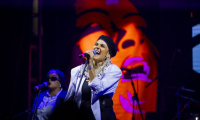





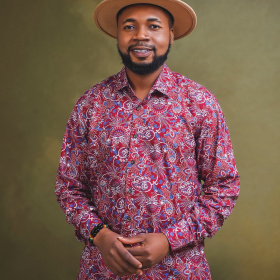
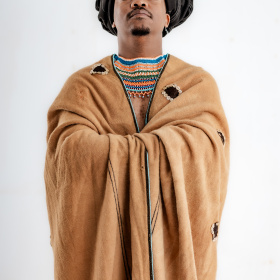


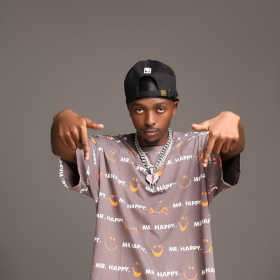
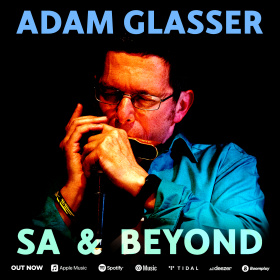
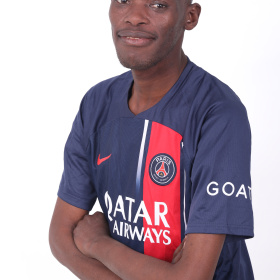
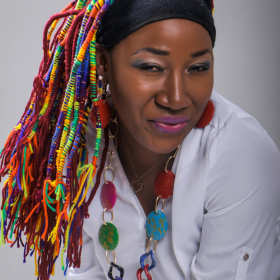

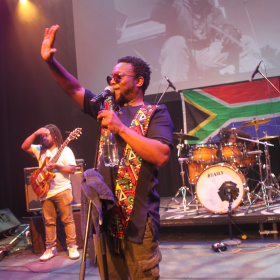


Comments
Log in or register to post comments